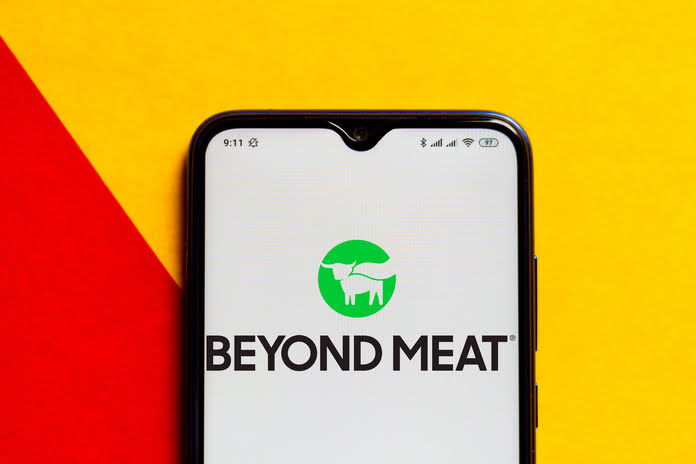Beyond Meat (NASDAQ:BYND), once a high-flying stock in the vegan food sector, has seen its market value plummet since its initial public offering (IPO) in 2019. Valued at $382.8 million by market cap, Beyond Meat stock, which reached an all-time high of $235 in July 2019, now trades approximately 97.6% below that peak, hovering around $5.62 per share. This article delves into a comprehensive Beyond Meat stock analysis to determine if the stock is a buy under $10.
Beyond Meat’s Q2 2024 Performance: A Mixed Bag
In Q2 of 2024, Beyond Meat reported revenue of $93.2 million, accompanied by a net loss of $34.5 million, or $0.53 per share. Although revenue decreased by 8.8% year-over-year, it surpassed analysts’ expectations of $88 million, and the losses were in line with consensus estimates. Importantly, Beyond Meat’s gross margin expanded to a record 14.7%, propelling BYND shares higher in the aftermath of the earnings report. Over the past four quarters, the company’s gross profits have surged from $2.27 million to $13.71 million, indicating a positive trend in operational efficiency.
During the earnings call, Beyond Meat CEO Ethan Walden Brown emphasized the company’s focus on improving gross margins throughout the year. He highlighted the impact of distributed pricing adjustments, reduced promotional spending, and continued improvements in the cost of goods sold (COGS) as key factors contributing to these gains.
Cost-Cutting Measures: A Focus on Efficiency
As part of its strategy to navigate financial challenges, Beyond Meat has implemented aggressive cost-cutting measures across its business segments. The company is prioritizing cash management with the goal of achieving positive cash flow in the near future. Despite lower sales, Beyond Meat managed to increase its gross profits by $11.4 million while reducing operating expenses by $8.4 million compared to the same period last year. Additionally, inventory levels and cash consumption have both decreased on an annual and sequential basis.
Beyond Meat’s operating expenses fell by $22.6 million over the last six months, excluding a class-action settlement accrued in Q1. To further streamline operations, the company plans to focus on key products and markets. The recent launch of the Beyond IV campaign marks the culmination of a multiyear effort to refine the company’s product strategy, setting the stage for targeted growth initiatives.
Beyond Meat is also intensifying its efforts in the European market, aiming to capture a larger share of the plant-based meat business. For example, in May, McDonald’s (NYSE:MCD) Germany launched a promotional campaign featuring meals centered around the McPlant Burger and McPlant Nuggets, a collaboration with Beyond Meat.
Market Outlook: What’s Next for BYND Stock?
Despite some positive developments, Beyond Meat stock remains a high-risk investment. The company continues to face significant challenges, as reflected in analyst sentiment. Of the 13 analysts covering Beyond Meat stock, seven recommend holding, while six suggest a strong sell, with none advocating a buy. The average target price for BYND stock stands at $5.72, which is nearly flat compared to its recent closing price.
Looking ahead, Beyond Meat is expected to report a loss per share of $2.17 in 2024 and $1.63 in 2025. Although the company ended Q2 with a cash balance of $145 million, it will likely need to raise additional capital by the end of 2026 if profit margins remain negative. This raises concerns about the long-term sustainability of the business and adds to the stock’s risk profile.
Conclusion: Should You Buy Beyond Meat Stock Under $10?
Based on this Beyond Meat stock analysis, the stock’s current price under $10 may seem attractive, but the underlying risks cannot be ignored. While the company has made strides in improving gross margins and reducing costs, its ongoing losses and need for future capital raise significant red flags. Investors considering Beyond Meat should weigh these risks carefully and consider whether the potential rewards justify the high level of uncertainty surrounding the stock’s future performance.
Featured Image: Megapixl















